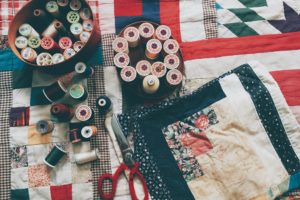Bridget ‘Biddy’ Mason led an incredible life. Born a slave in Hancock, Georgia in 1818, she later became a well-known California philanthropist, and died as the richest African-American woman in Los Angeles in 1891.
From childhood on, Biddy experienced heart-ache and hardship. Separated from her birth parents at a young age, she was sold to John Smith and went to live on his plantation in South Carolina. There, she was assigned to work with the house servants and to assist the plantation midwife.
At the age of 18, John Smith ‘gifted’ her to his cousin, Robert Smith. Biddy then moved to a new plantation in Logtown, Mississippi where she grew into the role of the plantation’s midwife. In the ensuing years she also gave birth to three daughters, whose father was assumed to be Robert Smith.
While Robert Smith and his family lived in Mississippi, he converted to the Church of Later Day Saints (Mormon). As part of his conversion, he was strongly urged to set his slaves free. But he refused.
In 1848, Smith decided to move his family to Utah. Biddy and the other slaves walked behind the family wagon, for the 1,700-mile trek. On the trail, Biddy helped to herd cattle, prepare meals, and act as the trail midwife. Her youngest daughter made the trip strapped to Biddy’s back.
Once they reached Utah, Mormon leader Brigham Young announced he was seeking a group to establish a Mormon community in San Bernardino, California.
In 1851 Robert Smith packed up his family and set out for California, unaware that the Compromise of 1850 had stipulated that California was admitted as a free state and any slaves brought into California would be granted their freedom.
As the Smiths set out for California, Biddy once again walked behind the family wagon, this time for 650 miles.
Upon reaching San Bernardino, California, Smith was alerted to the 1850 Compromise but kept his slaves ignorant of the law. Five years later, fearing he might lose his slaves, Robert Smith made plans relocate his family to Texas.
In the meantime, Biddy had become acquainted with Robert and Minnie Owens, two free African-Americans living in San Bernardino. Once they explained to her that she and the other slaves were being held illegally, Biddy planned her escape.
Under cover of night, Biddy led several of the other enslaved women and their children away from the Smith home.
Hotly pursued by Smith, the women managed to reach a canyon outside of present day Santa Monica, California, when Smith caught up with them.
Fortunately, Biddy’s friend Robert Owen alerted the Los Angeles County sheriff that Robert Smith had broken the law. The sheriff sent out a posse and located Smith, and quickly freed the women and children.
Biddy discovered that she could sue for her freedom. In late 1856, with the help of Robert Owen, she petitioned the Los Angeles County Court, only to be told she could not testify on her behalf, since she was a black woman. She then requested a few minutes to talk with the judge in private.
That judge, the Honorable Benjamin Hayes, listened to her incredible story and immediately granted her freedom, the freedom of the ten women traveling with her, and all the children.
Now a free woman, Biddy moved to a rural community on the outskirts of Los Angeles, and worked as a midwife. After ten years of saving every penny she had a bank account of exactly $250.00.
Emptying her account, she bought the one thing she desired most, her own land. The money enabled her to buy two lots. Then she promptly set about building a clapboard house. Next, she built two smaller houses and rented them out.
Wanting to help those less fortunate than herself, she set up a day care operation and a small orphanage in her own home. She became legendary for never turning anyone away who needed help. From providing daycare for working mothers, to ministering to prisoners, Biddy shared her resources with others.
As the years went on, she saved money from her various incomes, and shrewdly invested in buying more land.
By 1872, she had enough cash to set up the first elementary school for black children in Los Angeles, as well as the first African Methodist Episcopal church in the area.
And she continued to purchase real estate.
By the 1890s, Biddy’s home and adjacent property were located directly in the center of the Los Angeles financial district—prime urban real estate.
When she died in 1891 her estate had a value of $300,000, approximately 6 million dollars in today’s money.
And then, like so many strong women, she slipped out of history.
In 1989 the city of Los Angeles turned Biddy’s original property into a high-rise office building. The Power of Place, a non-profit corporation dedicated to celebrating Los Angeles’s multicultural history created an art installation on the property to honor Biddy’s life. Members of the project included Sheila Levrant de Bretteville, Donna Graves, Dolores Hayden, Susan King, and Betye Saar.
As you walk right to left along the 8-foot-high, 81-foot concrete linear wall you can read about the salient events in Biddy’s life. At the end of the wall, if you look to your west, there is a floor to ceiling photograph, grainy with age, of her original Los Angeles homestead.
A strong woman who lived her life with purpose, helping others.
Thank you to my brother, Randy Harris, who took me to visit Biddy’s memorial.
If you enjoyed Biddy’s story, sign up to become a follower of Strong Women on the right sidebar and you’ll receive notification once a month of another blog post.
In the meantime, you can read the fascinating stories of my two favorite strong women on Amazon.
Cut From Strong Cloth www. amzn.com/1940553024.
Last Curtain Call www.amzn.com/1940553067.






